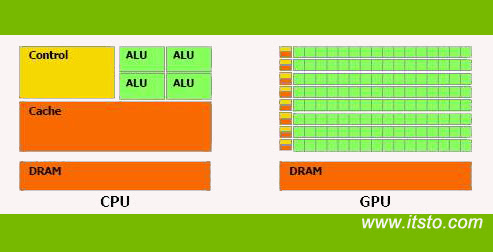CPU (central processing unit) and GPU (graphics processing unit) are like two bright stars, each shining with unique light, jointly promoting the rapid development of information technology. Although they are members of the same processor family, they have their own advantages in terms of functional positioning, architecture design, performance characteristics, and application scenarios.
CPU: All-rounder
CPUs are known as the "brains" of computers. It is responsible for performing most of the usual tasks, such as running the operating system, applications, web browsing, and file processing. The design of the CPU is based on the von · Neumann architecture, which means that it can flexibly handle complex logical operations and decisions, ensuring that computer systems run smoothly.
GPU: Parallel Computing Master
GPUs were originally designed to accelerate graphics rendering, but now they have become a powerful tool for parallel computing. Inside the GPU is a large number of simple processors that can handle multiple tasks at the same time, making them ideal for data-intensive jobs such as graphics rendering, machine learning, and scientific computing.
The difference and cooperation between the two
Although CPUs and GPUs are very different in design, they are working together more and more closely. CPUs excel at handling single tasks and complex logical judgments, while GPUs excel at processing large amounts of parallel data computations. In many cases, such as deep learning projects, the CPU can handle data preprocessing and model inference, while the GPU is responsible for model training, complementing each other.

Figure: Difference between CPU and GPU
As for whether GPUs can replace CPUs, it depends on the use case:
In tasks that require a lot of parallel processing, such as deep learning, scientific simulation, etc., GPUs can provide higher performance than CPUs. For tasks that require complex logic and single-threaded performance, CPUs are still a more appropriate choice.
Future directions
As technology evolves, CPUs and GPUs are working more closely together. Heterogeneous computing systems, for example, combine CPUs and GPUs to deliver faster computing and lower power consumption. In the future, we can expect more such integrated systems to emerge to support the rapid development of artificial intelligence, big data analytics, and other fields.
In conclusion, both CPUs and GPUs have unique capabilities that play an important role in different use cases. Their cooperation not only promotes technological progress, but also brings great value to human society. As technology continues to advance, the two will continue to work together to create more miracles. GPUs and CPUs have their own advantages, and they can be used in many cases in a complementary way. In certain high-performance computing environments, CPUs and GPUs work together to achieve optimal performance through heterogeneous computing architectures. As a result, GPUs are unlikely to completely replace CPUs, but they can provide significant computing power in some areas.






